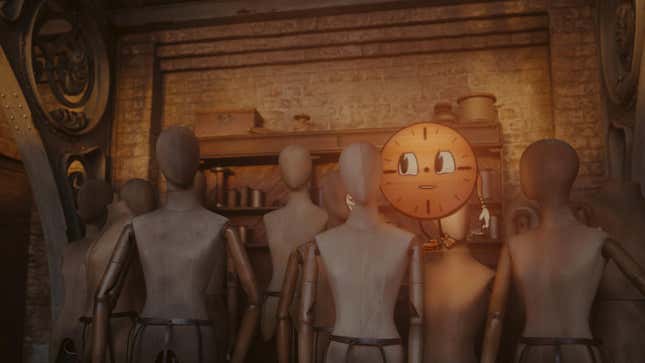
Last week’s episode of Loki, “1893,” was particularly impactful for a number of reasons, the obvious ones being that it saw the reintroductions of Gugu Mbatha-Raw’s Ravonna Renslayer, Tara Strong’s Miss Minutes, and the show’s first variant of Jonathan Majors’ He Who Remains—three characters (or versions of characters) who were very important to the show’s first season. So, The Hollywood Reporter sat down with director Kasra Farahani to talk about the episode, and he offered a handful of interesting revelations about working on a big Marvel show like this (and one revelation that may be the least surprising thing since someone first reported that water is wet).
First, the good stuff: Farahani says that, during production of the show’s first season, the crew had to fight hard to convince Marvel Studios to let them build “fully 360 sets” to match their “vision,” with ceilings and lighting and everything, which he says “was very different from a lot of projects within Marvel Studios” (not to mention other TV stuff on Disney+, like with the horrible Monkey’s Paw that is Star Wars’ Volume, which allows Lucasfilm to puts its characters on any fantastical planet as long as it’s a mostly deserted level from a particularly soulless video game).
But because they had that fight in season one, they didn’t need to have it again for season two, and now they’ve got a show that—at the very least—looks more interesting on a production design level than most other things that Marvel or Disney tend to put out. And Farahani is a little hopeful that Loki proving its possible to use sets like this will “change things” beyond this show “in terms of how things are photographed.” That, arguably, would go a lot further to fixing what’s wrong with Marvel shows than restructuring how they’re developed.
Elsewhere in the interview, Farahani says that there was a lot of “back and forth” on whether they should’ve ever shown Loki and Mobius riding on their bicycle-built-for-two, with Farahani seemingly landing on the side that believed it would’ve been better to imagine it than ever actually see it, but what is shown in the episode—with the two of them in the background—is all they ever shot. That means there’s no Snyder Cut with more bicycle stuff for Marvel to release.
Finally, the very unsurprising thing is that Farahani says Jonathan Majors (who is in the news for other reasons today) came in with Victor Timely’s “quirkiness” in mind already, which means all of the bizarre pausing and stuttering while he spoke was entirely Majors’ invention. And that should be obvious to everyone who saw the episode, because—no disrespect to actors in general—it was one of the most “actor making a choice” things that any actor has ever done. Majors has had to play three or so versions of this character at this point, counting Kang in Ant-Man And The Wasp: Quantumania, so it makes sense that he’d come up with some gimmick that makes this version of the guy different than the others, but surely someone (maybe Farahani) could’ve taken him aside and said “we only have 55 minutes for this episode, and you’re taking up most of it every time you open your mouth.”